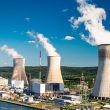by Michael Kent, VP, Lead Climate Strategist, Blackrock
We’ve read the headlines. Extreme weather events from wildfire to floods are forcing governments and companies around the world to consider climate-related risks as they plan for the future. Reducing greenhouse gas (GhG) emissions has been central to these plans and is already under way. According to the Global Carbon Project, the U.S. has seen GhG decline by 0.8% annually from 2013 to 2018, as it turns away from coal power to natural gas and renewable energy sources. This mirrors the downward trend in Europe, with numbers in both regions estimated to jump lower in 2019 as well.
Despite some signs of improvement, there is still great need to reduce emissions globally to combat the threats of climate change, particularly in emerging markets. For example, China and India have been increasing emissions, leading to a still growing – but slowing – global concentration of greenhouse gases. Nonetheless, we believe the recent emissions reduction trajectory in developed markets is a sign of things to come worldwide. As we wrote in our recent Carbon Beta blog, we see budding appetite for carbon pricing regulation as a key accelerator of this transition, with Europe leading in the near-term.
So, with a global energy shift underway across countries and sectors, there are clearly investment implications throughout your portfolio. How should you factor that into your allocation strategy?
Last year, BlackRock put to the test a new developed market equity approach, investing in companies we believe are more prepared for the low-carbon transition. The results thus far have been promising, having generated both positive financial performance and environmental outcomes relative to market-cap weighted benchmarks.
Here are three tips based on what we learned:
1. Assess where companies are going, not just where they are
When looking at whether a company is prepared for the low-carbon transition, investors need to not only understand its current carbon emissions profile (how much it emits versus its annual sales, for example) but also where it is heading. We think that while it’s important to identify companies already operating efficiently and emitting less relative to peers, there’s also benefit in identifying those companies taking their reduction plan seriously and making objective progress toward lower emission targets in the future. Hence, tracking a company’s “emissions momentum” can be a sign of future success. An increasing number of investors and vendors now track and provide carbon metrics from the CDP (formerly the Carbon Disclosure Project), including Bloomberg, MSCI and BlackRock.
2. Look across all industries
While the energy sector is an obvious place to start, investors should consider looking across the full investment universe for companies that are better (or less) prepared for the transition. BlackRock’s analysis shows that other industries, such as materials, industrials, utilities and consumer discretionary, have high exposure to the low-carbon transition. For example, auto-makers and leisure companies can have emissions profiles on par with energy exploration companies. Put simply, we think there will be winners and losers across sectors as the world shifts to energy-efficient practices and low-carbon technology. Investors should review exposures across their entire portfolio.
3. Don’t forget the upside
Climate change and the low-carbon transition present a vivid set of risks – from increasing extreme weather events to a growing number of coal-related bankruptcies. But there is also the potential for upside opportunities from companies that are driving the low-carbon transition, in businesses such as new renewable energy sources, transportation solutions, energy efficiency, battery technologies and low-carbon or carbon negative agriculture techniques. With increasing efficiency and potential for more carbon regulation, we expect these opportunities to manifest and offer considerable upside to investors.
Bottom line
We believe all investors should consider the potential risk and return impacts of the low-carbon transition on their portfolios.
Michael Kent is a vice president and lead climate strategist for BlackRock Sustainable Investing.
Investing involves risks, including possible loss of principal.
This material is not intended to be relied upon as a forecast, research or investment advice, and is not a recommendation, offer or solicitation to buy or sell any securities or to adopt any investment strategy. The opinions expressed are as of January 2020 and may change as subsequent conditions vary. The information and opinions contained in this post are derived from proprietary and non-proprietary sources deemed by BlackRock to be reliable, are not necessarily all-inclusive and are not guaranteed as to accuracy. As such, no warranty of accuracy or reliability is given and no responsibility arising in any other way for errors and omissions (including responsibility to any person by reason of negligence) is accepted by BlackRock, its officers, employees or agents. This post may contain “forward-looking” information that is not purely historical in nature. Such information may include, among other things, projections and forecasts. There is no guarantee that any forecasts made will come to pass. Reliance upon information in this post is at the sole discretion of the reader. Past performance is no guarantee of future results.
©2020 BlackRock, Inc. All rights reserved. BLACKROCK is a registered trademark of BlackRock, Inc., or its subsidiaries in the United States and elsewhere. All other marks are the property of their respective owners.
BSIH0120U-1051626-1/1
This post was first published at the official blog of Blackrock.















